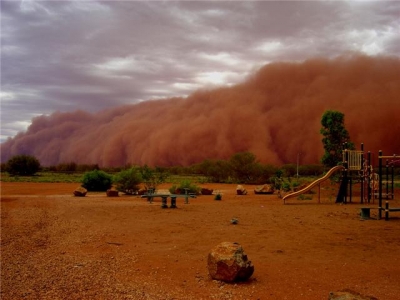
|
Not only can sandstorms damage and bury plants and seedlings, when sand is carried in the wind, the suspended particles trap the Sun’s heat before it can reach the ground. As a result, the air in the area where this sand is deposited or remains suspended becomes warmer and drier. It cannot retain moisture any more. The increase in temperature and decreased precipitation reduce plant growth and result in greater soil erosion, which leads to changes in the landscape. |
Sand and dust storms cause significant negative impacts on society, economy and environment at local, regional and global scale. There are three key factors responsible for the generation of sand and dust storms – strong wind, lack of vegetation and absence of rainfall. The environmental and health hazards of such storms cannot be reduced permanently; however its impact can be reduced by taking appropriate measures.
As the dust cloud rises, it reduces the horizontal visibility which can impact human life in many ways. The fine suspended particles also contain contaminants, bacteria, pollens, which cause negative health impacts such as allergies and respiratory diseases.
Dust also carries airborne pollutants such as toxins, heavy metals, salt, sulphur, and pesticides etc. which cause significant health impacts when people inhale the contaminated dust. Dust can corrode buildings and other built infrastructure as it contains high level of salts, especially in the GCC countries.
Picture credit: Google




